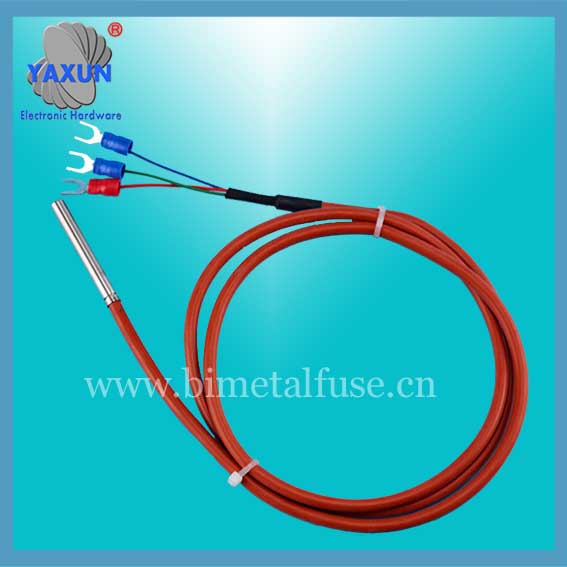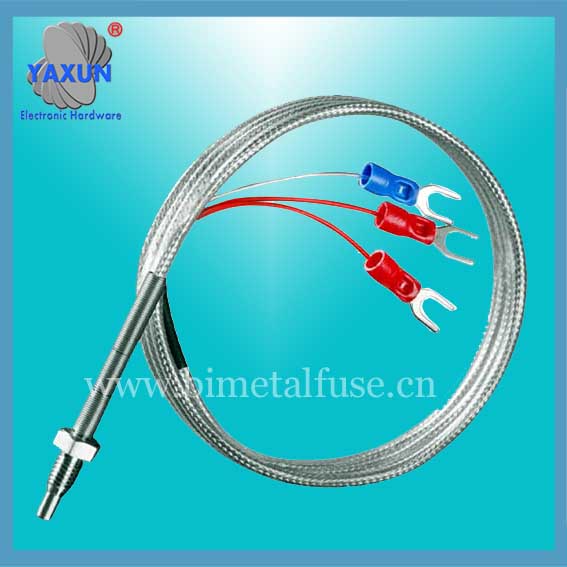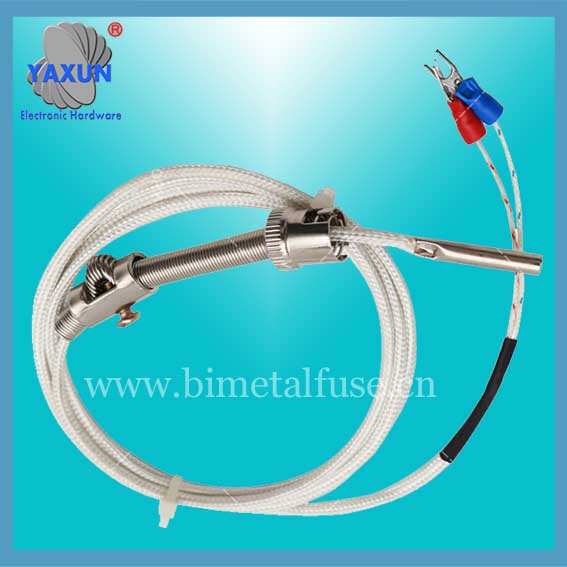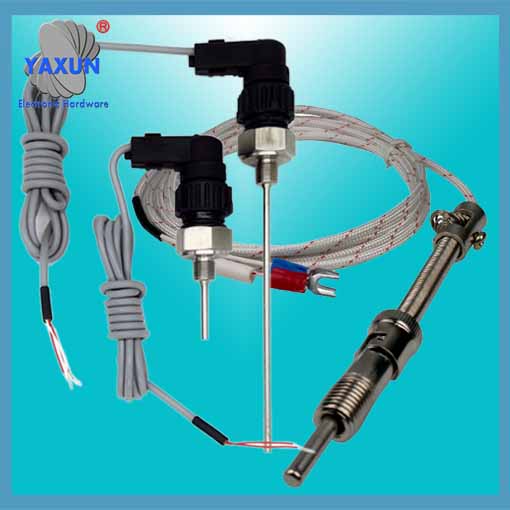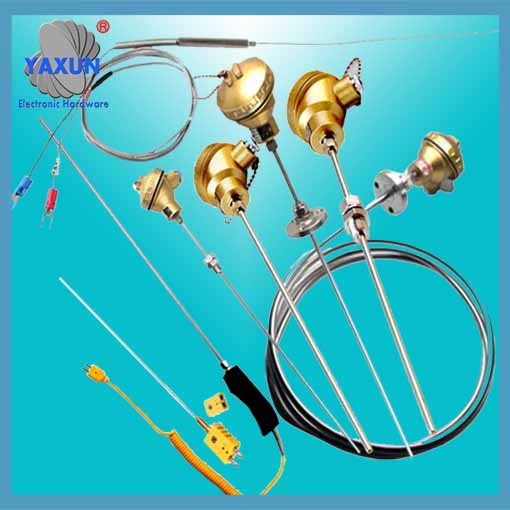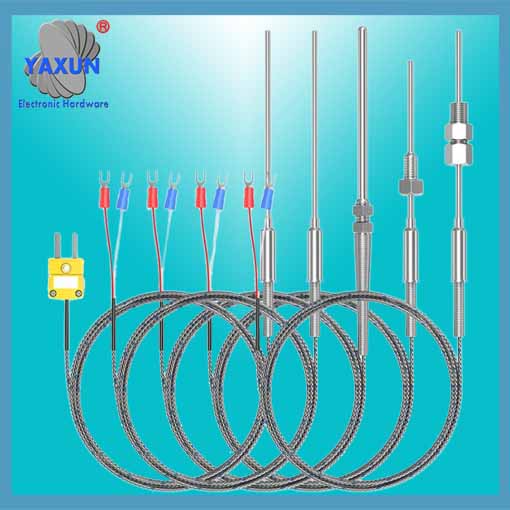High Precision Temperature Sensor Temperature Measurement
- PRODUCT DETAIL
High-precision temperature sensor is a sensor that uses various physical properties of a material to change with temperature and converts temperature into electricity. These showed a regular change of the physical properties of the main body. The temperature sensor is the core part of the temperature measuring instrument. According to the measurement method, it can be divided into two types: contact type and non-contact type. According to the characteristics of the sensor material and electronic components, it is divided into two types: thermal resistance and thermocouple.
Overview:
Generally platinum series resistance temperature sensors, such as Pt100, Pt1000, are high precision temperature sensors. According to Chinese standards, it is divided into second-class platinum resistors with an accuracy of +/- 0.3 ° C, and first-class platinum resistors with an accuracy of +/- 0.15 ° C according to international IEC standards. Class B is equivalent to domestic second-class platinum resistors with an accuracy of +/- 0.3 ° C, and Class A is equivalent to domestic first-class platinum resistors with an accuracy of +/- 0.15 ° C. A higher level is AA level, which is 1 / 3B level, and the accuracy is +/- 0.1 ° C. There are also some international manufacturers that can produce non-standard high-precision platinum resistance temperature sensors, such as 1 / 5B grade, with an accuracy of +/- 0.06 ° C (some are 1 / 6B, with an accuracy of +/- 0.05 ° C). Higher accuracy temperature sensors for calibration, such as 1 / 10B class, accuracy is +/- 0.03 ℃. There are also some European laboratories that can calibrate extremely precise platinum resistance temperature sensors, such as 1 / 30B grade, with an accuracy of +/- 0.01 ° C. These ultra-high-precision temperature sensors have extremely high accuracy, but the sensors and their processing circuits are extremely expensive, so high-precision temperature sensors are only used where necessary. Do not blindly demand too much, exceed the actual use requirements.
working principle:
The temperature sensor thermometer achieves thermal equilibrium through conduction or convection, so that the display value of the thermometer can directly indicate the temperature of the measured object. Generally, the measurement accuracy is high. Within a certain temperature range, the thermometer can also measure the temperature distribution inside the object. But for moving objects, small targets or objects with small heat capacity, large measurement errors will occur. Commonly used thermometers include bimetal thermometers, glass liquid thermometers, pressure thermometers, resistance thermometers, thermistors, and thermocouples.
Applications:
Widely used in industry, agriculture, commerce and other sectors. These thermometers are often used in daily life. With the wide application of cryogenic technology in superconducting technology and defense engineering, space technology, metallurgy, electronics, food, pharmaceutical and petrochemical sectors such as research, measuring the temperature of 120K or less of the low-temperature thermometer has been developed. Such as low temperature gas thermometer, vapor pressure thermometer, acoustic thermometer, paramagnetic salt thermometer, quantum thermometer, low temperature thermal resistance and low temperature thermocouple. Low temperature thermometers require small temperature sensing elements, high accuracy, reproducibility and stability. Carburized glass thermal resistance made by porous high-silica glass carburizing and sintering is a kind of temperature sensing element of low temperature thermometer, which can be used to measure the temperature in the range of 1.6 ~ 300K.
Main classification:
For a thin film platinum resistance pt100, pt1000 platinum resistance element such terms. The products are mainly divided into several categories, covering products in low temperature, medium temperature and high temperature.
Low temperature part:-
200 ~ 150 ℃ (mainly used in various low temperature environment)
Medium temperature section:
-50 ~ 400 ℃ (mainly used in various medium temperature environment)
-50 ~ 550 ℃ (mainly used in various medium temperature environment)
-50 ~ 600 ℃ (mainly used in various medium temperature environment)
Remarks: Above 600 ℃ are high temperature parts, and the appearance of the component is a cylindrical ceramic body. However, its internal structure is still a thin film structure, which is different from domestic wire-wound pt100 platinum resistors sold on the market.
High temperature part:
-50 ~ 850 ℃ (mainly used in various high temperature environment)
-50 ~ 1000 ℃ (mainly used in various high-temperature environment conditions)
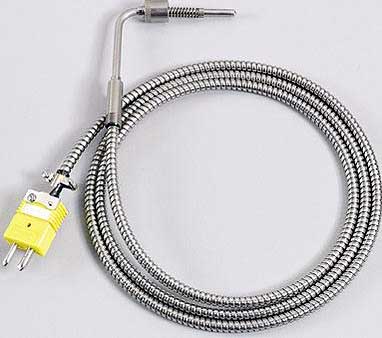
product manual:
Many manufacturers' platinum resistance products have different nominal temperature ranges. Some even cover the entire temperature range from low to medium temperature and low to high temperature, which is worth noting for this way of marking. Strictly speaking, the reason why platinum resistance elements are divided into different temperature ranges is the operating temperature range corresponding to their best performance. In short, "you need to use low-temperature parts for low-temperature measurement, medium-temperature parts for medium-temperature measurement, and high-temperature parts for high-temperature parts." For some standards such as "-200 ~ 500 ° C, -200 ~ 800 ° C", we will make some brief comparisons here. This standard method obviously mixed the low temperature range of platinum resistance with the Chinese range. However, in fact, it is absolutely impossible for a medium-temperature component to exhibit such an ideal test effect at a low temperature, and it may be damaged. This is mainly due to the differences in the production processes of low-temperature components, medium-temperature and high-temperature components. Therefore, when we manufacturers generally mark, they will mark according to the corresponding temperature range. For different customers, it is only necessary to determine whether your subject's temperature measurement range belongs to medium temperature, low temperature, or high temperature. This is a problem that deserves attention. "-200 ~ 500 ° C, -200 ~ 800 ° C", please pay attention to it. Because it actually involves your test results, it is not good to have a large test range, which is exactly our most common misunderstanding.
Overview:
Generally platinum series resistance temperature sensors, such as Pt100, Pt1000, are high precision temperature sensors. According to Chinese standards, it is divided into second-class platinum resistors with an accuracy of +/- 0.3 ° C, and first-class platinum resistors with an accuracy of +/- 0.15 ° C according to international IEC standards. Class B is equivalent to domestic second-class platinum resistors with an accuracy of +/- 0.3 ° C, and Class A is equivalent to domestic first-class platinum resistors with an accuracy of +/- 0.15 ° C. A higher level is AA level, which is 1 / 3B level, and the accuracy is +/- 0.1 ° C. There are also some international manufacturers that can produce non-standard high-precision platinum resistance temperature sensors, such as 1 / 5B grade, with an accuracy of +/- 0.06 ° C (some are 1 / 6B, with an accuracy of +/- 0.05 ° C). Higher accuracy temperature sensors for calibration, such as 1 / 10B class, accuracy is +/- 0.03 ℃. There are also some European laboratories that can calibrate extremely precise platinum resistance temperature sensors, such as 1 / 30B grade, with an accuracy of +/- 0.01 ° C. These ultra-high-precision temperature sensors have extremely high accuracy, but the sensors and their processing circuits are extremely expensive, so high-precision temperature sensors are only used where necessary. Do not blindly demand too much, exceed the actual use requirements.
working principle:
The temperature sensor thermometer achieves thermal equilibrium through conduction or convection, so that the display value of the thermometer can directly indicate the temperature of the measured object. Generally, the measurement accuracy is high. Within a certain temperature range, the thermometer can also measure the temperature distribution inside the object. But for moving objects, small targets or objects with small heat capacity, large measurement errors will occur. Commonly used thermometers include bimetal thermometers, glass liquid thermometers, pressure thermometers, resistance thermometers, thermistors, and thermocouples.
Applications:
Widely used in industry, agriculture, commerce and other sectors. These thermometers are often used in daily life. With the wide application of cryogenic technology in superconducting technology and defense engineering, space technology, metallurgy, electronics, food, pharmaceutical and petrochemical sectors such as research, measuring the temperature of 120K or less of the low-temperature thermometer has been developed. Such as low temperature gas thermometer, vapor pressure thermometer, acoustic thermometer, paramagnetic salt thermometer, quantum thermometer, low temperature thermal resistance and low temperature thermocouple. Low temperature thermometers require small temperature sensing elements, high accuracy, reproducibility and stability. Carburized glass thermal resistance made by porous high-silica glass carburizing and sintering is a kind of temperature sensing element of low temperature thermometer, which can be used to measure the temperature in the range of 1.6 ~ 300K.
Main classification:
For a thin film platinum resistance pt100, pt1000 platinum resistance element such terms. The products are mainly divided into several categories, covering products in low temperature, medium temperature and high temperature.
Low temperature part:-
200 ~ 150 ℃ (mainly used in various low temperature environment)
Medium temperature section:
-50 ~ 400 ℃ (mainly used in various medium temperature environment)
-50 ~ 550 ℃ (mainly used in various medium temperature environment)
-50 ~ 600 ℃ (mainly used in various medium temperature environment)
Remarks: Above 600 ℃ are high temperature parts, and the appearance of the component is a cylindrical ceramic body. However, its internal structure is still a thin film structure, which is different from domestic wire-wound pt100 platinum resistors sold on the market.
High temperature part:
-50 ~ 850 ℃ (mainly used in various high temperature environment)
-50 ~ 1000 ℃ (mainly used in various high-temperature environment conditions)

product manual:
Many manufacturers' platinum resistance products have different nominal temperature ranges. Some even cover the entire temperature range from low to medium temperature and low to high temperature, which is worth noting for this way of marking. Strictly speaking, the reason why platinum resistance elements are divided into different temperature ranges is the operating temperature range corresponding to their best performance. In short, "you need to use low-temperature parts for low-temperature measurement, medium-temperature parts for medium-temperature measurement, and high-temperature parts for high-temperature parts." For some standards such as "-200 ~ 500 ° C, -200 ~ 800 ° C", we will make some brief comparisons here. This standard method obviously mixed the low temperature range of platinum resistance with the Chinese range. However, in fact, it is absolutely impossible for a medium-temperature component to exhibit such an ideal test effect at a low temperature, and it may be damaged. This is mainly due to the differences in the production processes of low-temperature components, medium-temperature and high-temperature components. Therefore, when we manufacturers generally mark, they will mark according to the corresponding temperature range. For different customers, it is only necessary to determine whether your subject's temperature measurement range belongs to medium temperature, low temperature, or high temperature. This is a problem that deserves attention. "-200 ~ 500 ° C, -200 ~ 800 ° C", please pay attention to it. Because it actually involves your test results, it is not good to have a large test range, which is exactly our most common misunderstanding.

